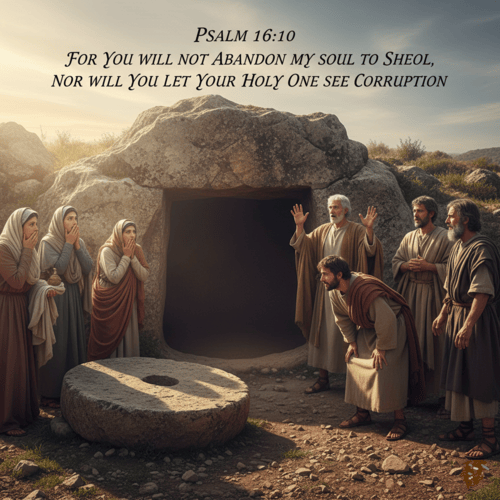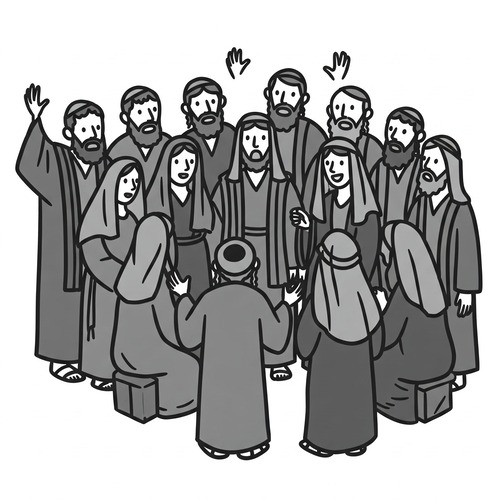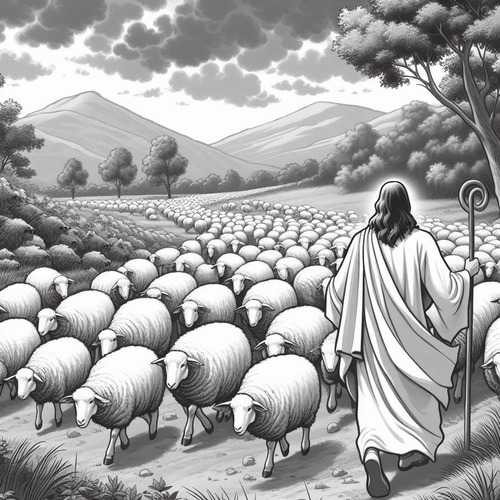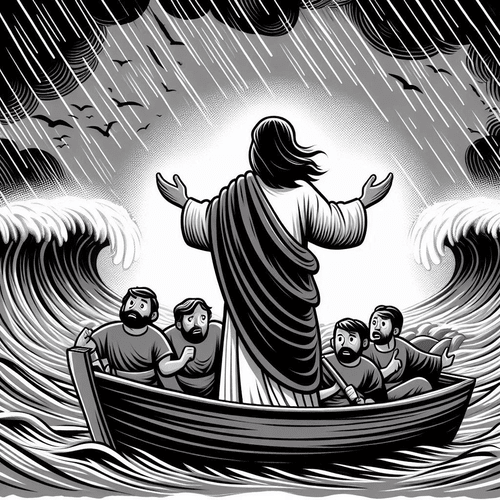Multiple Spirit Outpourings in Acts: How Are These Significant?
MULTIPLE SPIRIT OUTPOURINGS IN ACTS: Ever wondered why the Book of Acts reports several dramatic outpourings of the Holy Spirit in addition to the one at Pentecost? It’s a fascinating question that reveals something profound about God’s redemptive plan.
Jesus had predicted in Acts 1:8 that when the Holy Spirit comes, the gospel would go first to Jerusalem, then Samaria, Judea, and to the ends of the earth. This prophetic roadmap reveals far more than a geographical mission strategy—it unveils the very inclusive nature of God’s redemptive plan. The multiple Spirit outpourings in Acts represent nothing less than the fulfillment of God’s covenant promise to dwell intimately with His people.
THE SIGNIFICANCE OF THE SPIRIT’S WORK
The Holy Spirit plays a central role in God’s unfolding plan of redemption. From Genesis to Revelation, we witness the Spirit’s work in creation, empowerment, and the transformation of hearts. Yet, the events in Acts represent a unique and pivotal chapter in salvation history, as the Spirit inaugurates the New Covenant era and advances the mission of the Church.
MULTIPLE SPIRIT OUTPOURINGS: THE THEOLOGICAL CONTEXT
The Reformed perspective emphasises the covenantal continuity of Scripture. The promises of the New Covenant were prophesied in the Old Testament and fulfilled in Christ. Consider Jeremiah 31:31-34 and Ezekiel 36:26-27, which foretell the day when God would write His law on hearts and pour out His Spirit. In Acts, these promises find their fulfillment through Christ, as Peter declares in Acts 2:33: Jesus, exalted to the right hand of God, received the promised Spirit and poured Him out on His people.
Galatians 3:14 reinforces this truth: the blessing of Abraham comes to the Gentiles through Christ, so they may receive the Spirit by faith. This covenantal framework undergirds our understanding of the Spirit’s work in Acts.
THE FIRST OUTPOURING: A TRANSFORMATIVE MOMENT
When the Holy Spirit first descended on the disciples in Acts 2:1-4, it was nothing short of revolutionary. Imagine the scene: a sound like a mighty rushing wind, tongues of fire resting on each believer, and suddenly, they’re speaking in languages they’ve never learned. Pentecost is the seminal event of the New Covenant. When the disciples were filled with the Holy Spirit, it marked the inauguration of the Church as the Spirit-empowered body of Christ. Joel 2:28-32 is fulfilled as the Spirit is poured out on all flesh—men and women, young and old, transcending ethnic and social barriers (Acts 2:17-18).
Pentecost was a redemptive-historical milestone, an event that changed the trajectory of history. It was the beginning of God’s mission to gather His people from every tribe, tongue, and nation into one unified Church.
BREAKING DOWN BARRIERS: THE SPIRIT’S EXPANDING MISSION
But God wasn’t done. The subsequent Spirit outpourings in Acts weren’t random—they were strategic moves in God’s grand plan of redemption.
- The Samaritan Breakthrough: In Acts 8:14-17 something remarkable happens. The gospel reaches Samaria—a group traditionally despised by the Jewish people. When these Samaritan believers receive the Holy Spirit, it’s a powerful statement: God’s kingdom knows no ethnic boundaries. This event underscores the unity of the Church, as the apostles bear witness to the inclusion of Samaritans in the New Covenant community. Jesus had hinted at this moment in John 4:22, declaring salvation is from the Jews but would soon encompass all who worship in Spirit and truth.
- The Gentile Inclusion: Acts 10:44-48 presents an even more radical moment. At Cornelius’s house, Gentiles—non-Jewish people—receive the Holy Spirit. God was showing that His salvation plan extended far beyond the borders of Israel. The outpouring upon Cornelius and his household is a monumental turning point, signifying the inclusion of Gentiles in God’s covenant promises without the requirement of circumcision. Peter testifies to this in Acts 11:15-18, affirming salvation by faith alone. Ephesians 2:13-18 explains how Christ has broken down the dividing wall, creating one new humanity in Him.
- The Ephesian Disciples: In Acts 19:1-7, we see another unique outpouring. Some disciples who knew only John’s baptism receive the full gospel message and are baptised in the name of Jesus, experiencing the Spirit’s power. Here, we witness the Spirit completing the transition from John’s baptism to the full reality of the New Covenant. These disciples, who had not yet received the Spirit, now experience the fullness of God’s promise in Christ, joining the unified, Spirit-filled Church.
WHAT DOES THIS MEAN FOR US?
From a Reformed viewpoint, the multiple outpourings in Acts serve several unified purposes:
- Gathering One Church: The Spirit’s work in Acts demonstrates the formation of one Church, transcending ethnic, cultural, and social divisions. As Paul writes in 1 Corinthians 12:13, we’re all baptised into one body by one Spirit.
- Historical, Not Normative: The Spirit’s outpourings in Acts are understood as unique, foundational events for the Church’s mission. While every believer receives the Spirit at conversion, these outpourings are redemptive-historical milestones rather than prescriptive patterns for ongoing experience.
- Christ-Centred Mission: The Spirit’s work always points to Christ—His life, death, resurrection, and exaltation. As Jesus Himself said, the Spirit glorifies Him (John 16:13-14) and advances His Kingdom on earth.
CONCLUSION: MULTIPLE SPIRIT OUTPOURINGS
The multiple Spirit outpourings in Acts aren’t random events, but the deliberate unfolding of God’s eternal purpose. They reveal a profound theological truth: God is creating one unified people for Himself, drawing individuals from every nation, culture, and background into intimate communion through the Holy Spirit’s transformative power.
This is the beauty of God’s redemptive plan—a plan so comprehensive it shatters our human-made divisions, so gracious that it invites the most unlikely people into God’s family, and so powerful that it continuously breaks down the barriers of sin and separation. The Spirit’s work demonstrates that in Christ, there is neither Jew nor Greek, slave nor free, male nor female—but a new humanity united by divine grace.
MULTIPLE SPIRIT OUTPOURINGS: RELATED FAQs
Why does Acts 2 emphasise tongues of fire as a symbol? The Gentile outpouring (Acts 10) reflects the breaking down of barriers established by sin and highlights God’s covenant promise to bless all nations (Genesis 12:3). Reformed theology sees this as a fulfillment of God’s sovereign plan to unite all people under Christ’s headship (Ephesians 1:10).
- Were the multiple spirit outpourings a form of second blessing or separate baptism? From a Reformed perspective, these events were unique redemptive-historical moments, not a normative pattern for individual Christian experience. They represent God’s sovereign work of expanding the covenant community, demonstrating the Spirit’s unifying power across ethnic and cultural boundaries. These outpourings aren’t prescriptive for believers seeking a “second blessing,” but rather reveal God’s comprehensive plan of salvation.
- How does the Spirit’s work in Acts reflect covenant theology? The Spirit’s outpourings mark key transitions in redemptive history, showcasing the fulfillment of Old Covenant promises in the New Covenant. They demonstrate the Spirit’s role in gathering the Church and expanding the Abrahamic blessing to all nations (Galatians 3:14).
Why didn’t the Spirit come to all believers simultaneously? God’s redemptive plan unfolds progressively, revealing the inclusive nature of the gospel step by step. These strategic outpourings demonstrate God’s intention to break down historical barriers between Jews, Samaritans, and Gentiles, showing that the gospel transcends all human-made divisions. The timing reveals God’s sovereign design in bringing different groups into his covenant community.
- What does Pentecost teach about God’s sovereignty? Pentecost exemplifies God’s sovereignty in orchestrating salvation history. The timing, location, and participants illustrate His meticulous plan to inaugurate the New Covenant and expand the Church’s mission (Acts 2:1-4; Isaiah 46:10).
- What is the significance of Apostolic involvement in Acts 8 and 10? The apostles’ presence during the Spirit’s outpourings ensures unity in doctrine and practice within the Church. Reformed theology views this as crucial for safeguarding the covenant community’s integrity and reinforcing the one Spirit and one faith (Ephesians 4:4-5).
How does Acts portray the Spirit’s mission to create unity? Acts demonstrates the Spirit’s role in unifying believers across ethnic and cultural lines, forming one Church. The Spirit reverses the division caused by Babel (Genesis 11:1-9), aligning with God’s eternal plan to reconcile His creation through Christ (Colossians 1:20).
- Does Acts support the doctrine of election in the Spirit’s work? Yes, the Spirit’s outpourings align with God’s sovereign choice to gather His elect from all nations. Reformed theology sees these events as evidence of God’s irresistible grace, bringing His chosen ones into the covenant community (Romans 8:29-30).
- Why are miracles tied to the Spirit’s outpouring in Acts? Miracles affirm the Spirit’s presence and authenticate the apostolic message. From a Reformed perspective, they serve as signs of God’s sovereign power and His unfolding redemptive plan, pointing to Christ as the culmination of God’s promises (Acts 2:22; John 20:30-31).
How should modern believers understand these historical events? These outpourings are not a blueprint for contemporary Christian experience, but a powerful revelation of God’s redemptive plan. They demonstrate God’s sovereign grace that overcomes human divisions, calling believers to embrace the gospel’s universal scope. Christians are called to marvel at God’s work and participate in his mission of reconciliation.
MULTIPLE SPIRIT OUTPOURINGS: OUR RELATED POSTS
Editor's Pick

Why Do People Hate the Doctrine of Election?
…WHEN THEY REALLY SHOULDN’T Few Bible doctrines provoke stronger reactions than election. The idea that God chose some for salvation [...]

The Doctrine of Providence: Does God Really Govern All Things?
You’re sitting in the doctor’s office when the diagnosis lands like a thunderclap. Your mind races: Why this? Why now? [...]

No Decay, No Defeat: What It Means That Christ’s Body Saw No Corruption
On the Day of Pentecost, Peter stood before thousands and made a startling claim: David's body decayed in the tomb, [...]
SUPPORT US:
Feel the Holy Spirit's gentle nudge to partner with us?
Donate Online:
Account Name: TRUTHS TO DIE FOR FOUNDATION
Account Number: 10243565459
Bank IFSC: IDFB0043391
Bank Name: IDFC FIRST BANK






